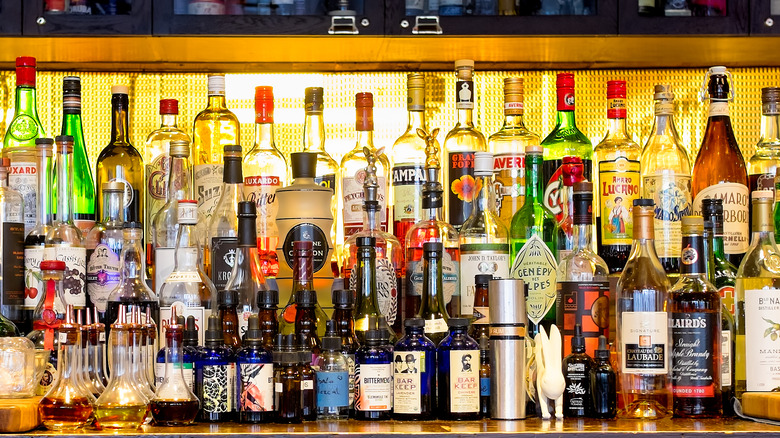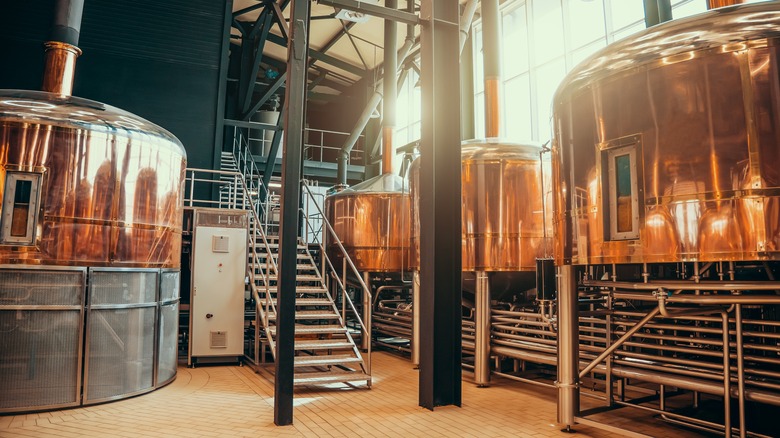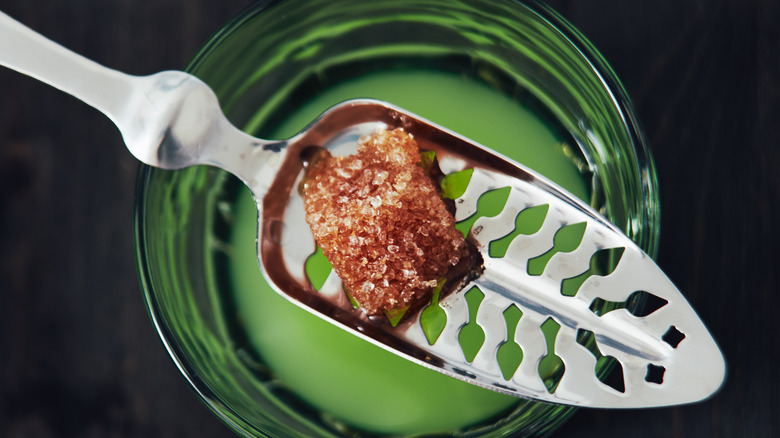Liqueur Vs Spirits: The Key Difference Explained
There's an old Latin expression, "In vino veritas," which translates to, "In wine, there is truth." We can interpret this to be a cheeky observation of how intoxication can reveal hidden character traits. Given the ubiquity of alcohol in the development of civilizations around the world, however, perhaps a more apt interpretation is that alcohol holds truths about the spirit of humanity. It's difficult to definitively say when we started making alcohol, as fermentation predates a lot of recorded history. There is evidence of alcohol production dating back 13,000 years, but the art of brewing booze can't be tied to just one origin (via Science Direct).
Ancient civilizations in China, the Mediterranean, the Middle East, and Europe all developed methods of fermenting grapes into wine, grains into beer, or other vegetation into alcoholic beverages (via Science Friday). Doing so provided ancient peoples a means to sanitize otherwise harmful drinking water, facilitating the growth of civilizations with primitive systems of public health management. As the practice of distilling developed, the beverages became venerated and incorporated into religious and social life. Our infatuation with alcohol persists to this day, as evident in words like whiskey, vodka, and aquavit, which come from (respectively) the Gaelic, Slavic, and Latin terms for "water of life." In today's lexicon, there are countless words to describe alcohol, but it's easy to get terms confused. One of the most puzzling conundrums for a novice is knowing the difference between spirits and liqueurs.
Understanding the distilling process
Even before the first stills were constructed, ancient people were observing the natural processes of distilling in the water cycle: water evaporates off of the sea to form clouds of vapor that roll toward the coast, condense, and precipitate fresh water. Ancient sailors noticed this phenomenon and applied it to their onboard wine reserves. Instead of the distillate yielding clean drinking water, the ancient sailors accidentally discovered distilled liquor (according to Drink Tinto).
To put it plainly, spirits are distillates, the product of an alcoholic beverage that has had its ethanol vaporized. This separates it from water and other substances and recondenses it into a concentrated solution or liquor. When discussing spirits in terms of liquor today, we use it to refer to seven primary distilled alcohols: vodka, whiskey, gin, tequila (mezcal), rum, and brandy. According to the New World Encyclopedia, the word "spirit" comes from the Latin word "spiritus," meaning breath or wind. Over time, the term became associated with metaphysical essence or aura. By the Medieval era, a superstition regarding demons of intoxication tied the term to distilled alcohol. To help remember this distinction, keep in mind that distilling doesn't make anything new, but rather concentrates the already existing flavors and qualities of a liquid into a smaller volume. This captures the spirit or essence of the original substance.
The origins of liqueurs
While spirits are the essential distillate, liqueurs are more like alcoholic concoctions. Also called cordials, aperitifs, and digestifs, liqueurs are "sweetened alcoholic drinks made by mixing or redistilling spirits with flavorings and colorings." They typically have an alcohol content of at least 15% alcohol by volume, according to Difford's Guide. Though alcoholic drinks and distilled spirits had been around for centuries, liqueurs weren't commercially popular until medieval monks began experimenting with distillation and infusion in their studies of medicine and alchemy (via Britannica).
Many of the iconic liqueur brands that exist today (especially in France and Italy) were originally developed as mystical elixirs and medicines. Manufacturers would distill base spirits to then infuse botanicals and sweeteners. The liqueurs were then marketed as tonics for vitality or aphrodisiac potions (via Britannica). Nowadays, the expansive variety of liqueurs can be categorized into eight distinct groups: amaro (herbaceous and spicy Italian bitters), cream liqueur (made with milk or milk substitute), crème liqueur (thick and syrupy but with no dairy), citrus liqueur (triple sec or limoncello), Amaretto (sweeter, nuttier Italian liqueur), coffee liqueur, flavored schnapps, and medicinal liqueurs like absinthe, Chartreuse, and Benedictine. Many are still made in monasteries using centuries-old recipes shrouded in mystery (via MasterClass). While alcohol and distilled spirits were essential in the development of civilization, liqueurs are essential in the proliferation of cocktails and beverage culture around the world.


